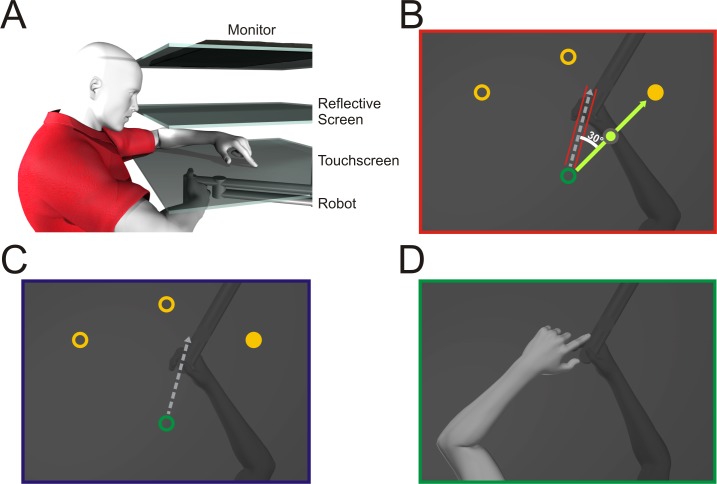Fig 1. Experimental setup and design.
A: Side view of the experimental set-up. The top layer is the monitor, middle layer is the reflective screen, and the bottom layer is the touchscreen. The robot is depicted beneath with the participants’ right hand grasping it. B-D: Top views of task specific set-ups. B: Training task. The home position is represented by a green circle with a 1 cm diameter; located approximately 20 cm in front of the subject and not visible during the trial. Targets are represented by yellow circles with a 1 cm diameter located 12 cm radially from the home position at 60°, 90° and 120°. The target was visible for 250 ms, after which it disappeared and participants moved their right hand along the constrained force channel (shown in red) to its remembered location. During rotated exposure training the constrained hand path was rotated 30° CCW from target with respect to the start location: C No-cursor reach task. The same target locations were used as during training. The participant would freely reach, without the force channel that was present during exposure training trials and without the cursor or any other visual feedback of the hand. D: Localization task. In the proprioceptive localization task, the robot passively moved the unseen, right trained hand to one of the three target locations. The participants then used the index finger of their left untrained, visible, hand to indicate the felt location of the right hand, specifically the thumb.

